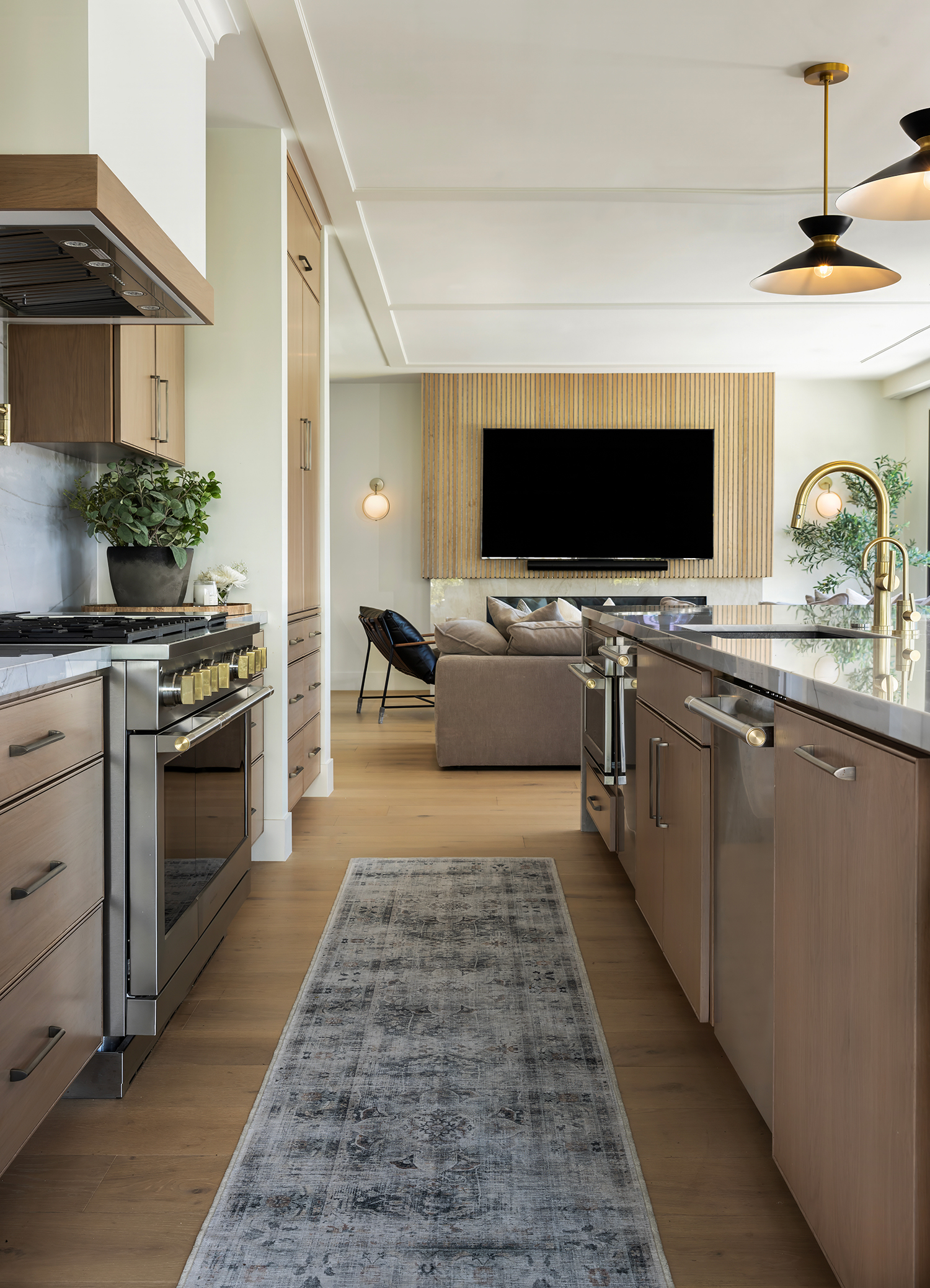
Are Kitchen Islands Outdated Now? Interior Experts Explain.
We find out if talk surrounding this kitchen staple is true or not.

Ryan Garvin
Assessing what’s “in” and “out” in 2024, some are calling it the end of the kitchen island. A staple in most houses, it’s hard to believe these multifunctional fixtures are becoming obsolete—and don’t worry, all four interior design experts I spoke with say kitchen islands are here to stay.
“Kitchen islands are like death and taxes—they’ll be sure things forever,” says Stacy Becker, president and director of design at White Label Interiors. “The flow around an island is something that many kitchens can afford and almost every kitchen needs. There’s an ease to an island that allows multiple people to function well, and, who wouldn’t love dual access to the fridge?”

Design by Stacy Becker; Photo by Miranda Estes Photography
Ashley Clark of Skout Interior Design agrees, calling the island the “heart” of a kitchen: “It’s where we whip up Christmas cookies, lay out snacks for the Super Bowl, craft school projects, wrap gifts, and even help kids with skinned knees.”
Chatter about the end of the kitchen island likely started with the 2023 National Electrical Code, which offered up a new challenge for designers: You can no longer have an outlet on the side of a kitchen island or peninsula, particularly because of the number of injuries caused by pulling or running into power cords plugged into outlets installed below a countertop or work surface.

Design by Ashley Clark; Photo by Ryan Garvin
One bonus from the coding change? You don’t need to have any outlets at all. Past versions of the electrical code required them, but now, you only need to provide provisions for the addition of an outlet in the future (say, if you or a new homeowner want an electrical outlet later on). However, Becker maintains that this is a good thing, and even calls it a “blessing” for designers.
“We were dealing with cabinets getting mismade to accommodate outlets at side panels or utilizing counter-mounted pop-up outlets that catch crumbs,” Becker says. “We still want outlets, of course, for various needs from large mixers to charging a laptop. But now we get to plan for best use and we don’t need to comply with a city inspector’s demands. The new change feels progressive and design-forward while not sacrificing safety.”
Below, Becker, Clark, and others share their suggestions for designing a code-compliant kitchen island or peninsula—plus alternatives for homeowners who can’t or don’t want to add a kitchen island.
Design Solutions for the New Code

Design by Ashley Clark; Photo by Ryan Garvin
Add Internal Outlets to the Floor
There are a lot of benefits to installing outlets on the floor near a table-style island, says Susie Novak, founder and principal designer of Susie Novak Interiors. “That way you get both the style, plus in some cases, better function,” she says.
Think Beyond Basic Functionality
Your kitchen island can serve multiple purposes and is a highly adaptable feature for storage, seating, and more, says Vyanca Soto of Market Studio Interiors. One idea she’s seeing more and more? “Islands with integrated appliances or butcher-block extensions are becoming more popular, allowing the island to serve as more than just a countertop,” she adds.

Design by Vyanca Soto; Photo by Darlene Halaby Photography
Get Creative with the Shape of Your Kitchen Island
“There is a growing trend toward custom shapes and configurations that better suit the flow of the kitchen,” Soto says, adding that she’s seen this more in open-concept living spaces.
Alternatives to Kitchen Islands

Design by Susie Novak; Photo by R. Brad Knipstein
Whether you want something new or simply don’t have room to accommodate a full kitchen island, Novak has a few space-saving ideas.
“Living in the Bay Area, we work on a lot of old Tudor and Arts and Crafts-style houses that don’t necessarily have the space for one,” she says. “This is a great opportunity to incorporate a peninsula or in some cases, a rustic farm table harkening to kitchens of the old English countryside.”
Novak has also elevated a small San Francisco kitchen (pictured above) with an informal dining set, which she says maximized the area’s footprint without compromising the aesthetic.
“Sometimes doing without a kitchen island allows you to add more character and mix up materials, while still providing the function of eating and serving your guests,” she says.
